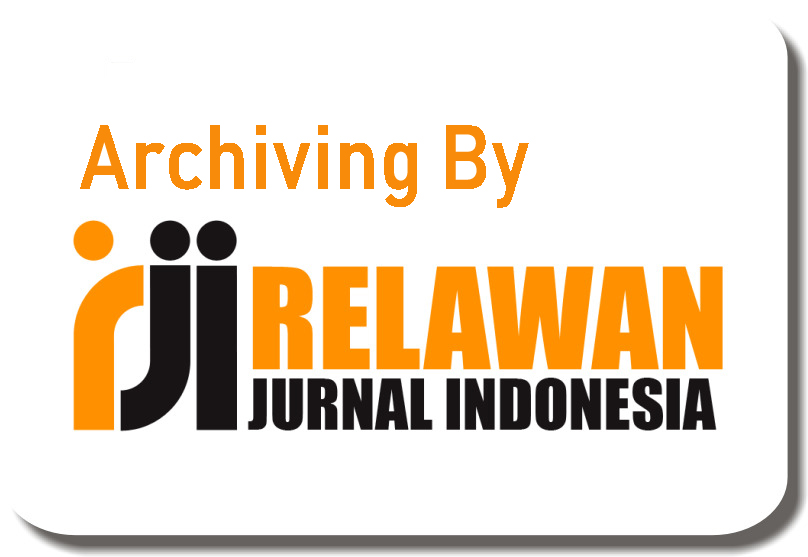The Effectiveness of Using Two Stay Two Stray to Improve Students’ Speaking Skills
Abstract
This study aims to investigate the effectiveness of the Two Stay Two Stray (TSTS) technique in improving students’ speaking skills at junior high school. The background of this research is based on the fact that speaking is often the most challenging aspect of English language learning, as students tend to fear making mistakes and lack self-confidence. This research employed a quantitative approach with a quasi-experimental design involving an experimental group and a control group. The instruments used were speaking tests, observation, and documentation. Data analysis using the t-test revealed a significant difference between students taught using the TSTS technique and those who were not. The findings indicate that the TSTS technique is effective in enhancing students' speaking skills, as it promotes active interaction, idea exchange, and increased confidence. The implications of this study suggest that teachers are encouraged to integrate the TSTS technique in speaking instruction to create a more communicative and participatory learning environment.
Keywords
Full Text:
PDFReferences
Adipramono, R. (2011). THE POSSIBILITY OF ENGLISH AS A SECOND LANGUAGE IN INDONESIA. Journal of English and Education, 5.
Ary, D., Jacobs, L. C., Razavieh, A., & Ary, D. (2010). Introduction to research in education (8th ed). Wadsworth.
Brown, H. D. (2006). Language assessment: Principles and classroom practices (Nachdr.). Longman.
Cohen, L., Manion, L., & Morrison, K. (2007). Research methods in education (6th ed). Routledge.
Creswell, J. W. (2012). Educational research: Planning, conducting, and evaluating quantitative and qualitative research (4th ed). Pearson.
Fatoni, N. (2014). The Influence of Using Two Stay Two Stray in Learning Reading Comprehension of Recount text (A Quasi Experimental Research at Second Grade of SP Dharma Karya UT Pondok Cabe Ilir, Pamulang, Tangerang Selatan, Banten) Thesis.
Ferdiyanto, F., & Kholili, A. (2022). Developing Supplementary Speaking Material for Eighth Grade Students. Journal of English Language Teaching and Cultural Studies, 5(2), 138–149. https://doi.org/10.48181/jelts.v5i2.16993
Field, A. (2013). Discovering Statistics Using IBM SPSS Statistics (4th ed.). SAGE.
Fitriani, R., Lestari, P., & Arifin, Z. (2023). The Effectiveness of Cooperative Learning Models in Enhancing Students' Interpersonal and Speaking Skills. Journal of Language Teaching and Learning, 11 (1), 45-48.
Fraenkel, J. (n.d.). How to Design and Evaluate Research in Education.
Ghasemi, A., & Zahediasl, S. (2012). Normality Tests for Statistical Analysis: A Guide for Non-Statisticians. International Journal of Endocrinology and Metabolism, 10(2), 486–489. https://doi.org/10.5812/ijem.3505
Gravetter, F. J., & Wallnau, L. B. (2014). Essentials of Statistics for the Behavioral Sciences (8th ed.). Wadsworth
Gillies, R. (2007). Cooperative Learning: Integrating Theory and Practice. SAGE Publications, Inc. https://doi.org/10.4135/9781483329598
Hamdani, B. (n.d.). THE INFLUENCE OF TECHNOLOGY-BASED TEACHING METHODS ON SPEAKING ABILITY IN ENGLISH LEARNING IN SECONDARY SCHOOLS.
Hamdani, B., Zuhri, M. D., Hotimah, H., & Ramadani, T. (2022). ENGAGING ENGLISH VOCABULARY THROUGH DIGITAL STORYTELLING ACROSS EFL YOUNG LEARNERS. The Ellite of Unira, 5(1). https://doi.org/10.53712/ellite.v5i1.1402
Harmer, J. (2007). The Practice of English Language Teaching (4th ed.). Pearson Longman.
Hidayati, N., & Lestari, E. (2020). Two Stay Two Stray Technique in Enhancing Students’ Speaking Ability. Journal of English Language Studies, 5(2), 87 94.
Hong, Y., Chen, L.-G., Huang, J.-H., Tsai, Y.-Y., & Chang, T.-Y. (2022). The Impact of Cooperative Learning Method on the Oral Proficiency of Learners of the Training Program for English Tourist Guides. Frontiers in Psychology, 13, 866863. https://doi.org/10.3389/fpsyg.2022.866863
Islam, R. (2022). TEACHING SPEAKING SKILL OF ENGLISH AS FOREIGN LANGUAGE IN SECONDARY SCHOOL LEVEL.
Iswanto, A., & Anugrah, S. (2020). THE EFFECTIVENESS OF TWO-STAY TWO STRAY IN ENHANCING STUDENTS’ SPEAKING ABILITY. PROJECT (Professional Journal of English Education), 3(1), 36. https://doi.org/10.22460/project.v3i1.p36-42
Kemendikbud. (2017). Kurikulum 2013: Kompetensi Dasar Sekolah Menengah Pertama. Jakarta: Kementerian Pendidikan dan Kebudayaan.
Liu, M., Chen, H. (2021). Understanding foreign language anxiety and its effects on oral performance among university students. Language Learning Journal. 49 (1). 105-120
Munirah & Marlina, L. (2020). Implementing Two Stay Two Stray technique to improve students' speaking ability. JELT: Journal of English Language Teaching, 9(1), 108-117.
Nurrahmawati, A., Andayani, & Sumarlam. (2021). Scaffolding speaking skills through cooperative learning techniques. International Journal of Educational Research Review, 6(3), 370–378
Pallant, J (2020). SPSS Survival Manual: A Step by Step Guide to Data Analysis Using IBM SPSS (7th ed.). Mcgraw-Hill Education.
Parawangsa, K. I., Islam, M. H., & Ferdiyanto, F. (2024). An Analysis of Students’ Problems in Developing Speaking Skill at Eighth Grade. International Journal of English Education and Linguistics (IJoEEL), 6(1), 32–42. https://doi.org/10.33650/ijoeel.v6i1.8261
Rahmawati, N., Hidayat, D., & Siregar, D. (2022). Enhancing EFL learners’ speaking fluency through cooperative learning. Journal of English Pedagogy, Linguistics, and Literature, 3(2), 93–104.
Richards, J. C., & Rodgers, T. S. (1986). Approaches and methods in language teaching: A description and analysis. Cambridge University Press.
Sugiyono. (2015). Metode Penelitian Kuantitatif, Kualitatif, dan R&D. Bandung: Alfabeta.
Vygotsky, L. S. (1978). Mind in Society: The Development of Higher Psychological Processes. Harvard University Press.
DOI: https://doi.org/10.31004/jele.v10i3.914
Refbacks
- There are currently no refbacks.
Copyright (c) 2025 Refi Mariska, Feri Ferdiyanto, Beny Hamdani

This work is licensed under a Creative Commons Attribution-ShareAlike 4.0 International License.



